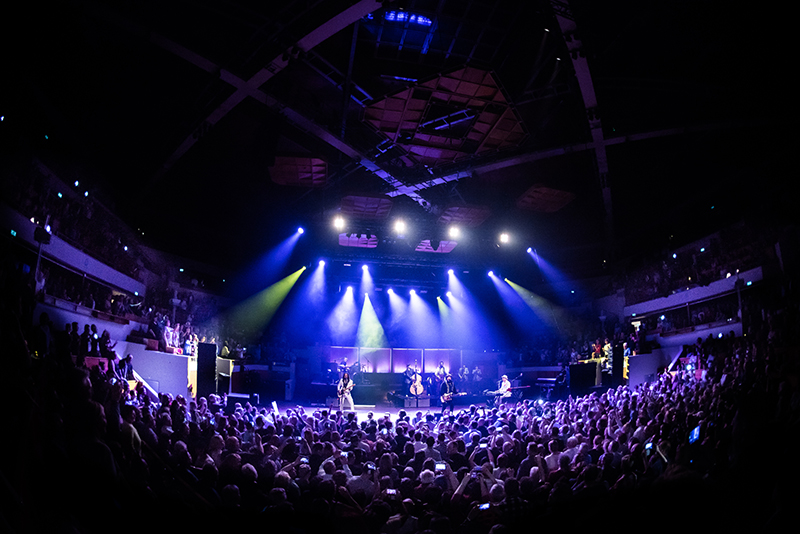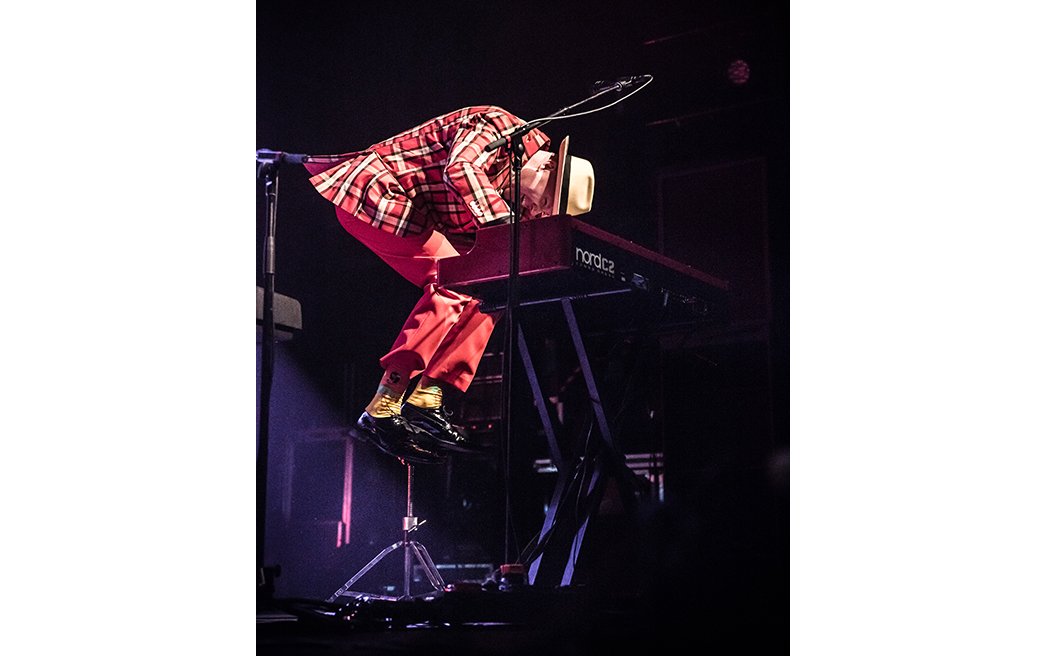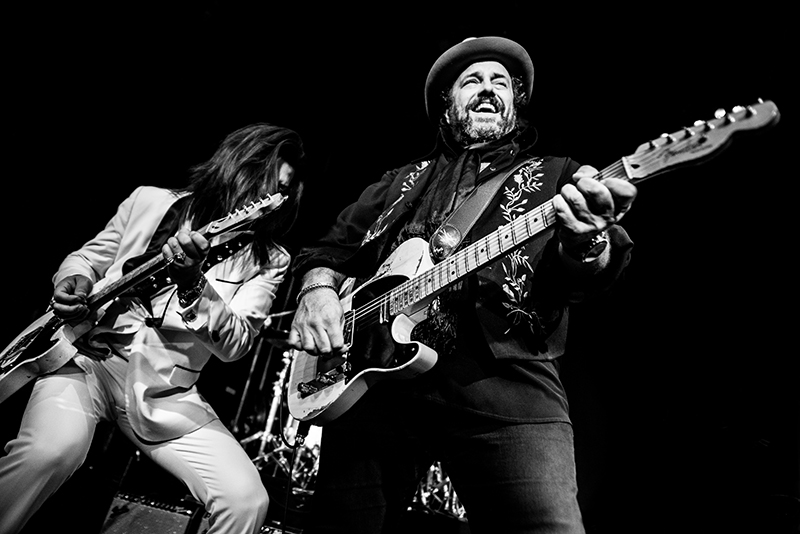The Mavericks make a glorious racket. Their touring act is nine pieces strong these days, as they unleash their high-energy Americana/Country/Rockabilly/Latin/Tex-Mex/Ska/Blues sound onstage.
It’s a challenging job to create space and balance in the mix for two guitars, keys, vocals, accordion, a horn section, rock ’n’ roll drums, Latin percussion, plus the operatic magnificence that is Raul Malo’s voice. Fortunately, monitor engineer Chris Bailey and front-of-house engineer Allan Casillas have developed systems that work for the band and their devoted audience.
Casillas, a Texas native who’s rightfully proud of his Mexican parentage, joined The Mavericks as a monitor mixer in 2015 after a stint mixing the Vans Warped Tour, among other things. “The Vans tour was one of those gigs that breaks you in,” Casillas says. “You find out if you really want to do this for a living.”
Casillas joined The Mavericks’ crew when the band was still touring behind In Time (2012), the Top 10 reunion album that led to hugely successful tours, three more studio albums, and a live album (All Night Live, 2016). After Casillas moved over to production managing and FOH in 2016 and Bailey took over monitor duties, the pair began to fine-tune their touring rig, which is provided by Sound Image.
Today Bailey mixes on an Avid Venue while Casillas uses a Midas Pro2 board, and both engineers employ an integrated Waves plug-in suite. We talked to Casillas in mid-February, as he rested up between legs of the tour.

Photo by Charlie Spieker
Where are you now?
I’m at home in Texas. I think Raul is on a cruise doing a solo act. Everybody else has some time off right now, but we’re going to Europe in late February: Switzerland, Belgium, Netherlands, Germany, and Denmark.
How would you characterize the sound of The Mavericks today, and how has it evolved since you’ve been with them?
When I joined, it was an eight-piece band; now it’s nine. They’ve added a trumpet player/percussionist. I would say the music has even more of a Latin feel now. It’s even more of a party band than before. The bandmembers say it’s Amerikinda.
They now have control over their art, their music, since they opened their own label [Mono Mundo Recording]. It’s been a cool ride, and we’ve changed some of our live production as we go.

Photo by Charlie Spieker
What sorts of changes?
In 2016, when I came to front of house, we started going wireless [six channels of Shure ULXD and six Sennheiser EK300 IEM G3 units]. It was a process to find the right equipment for our show, but as soon as we did, the guys became crazy onstage. They want to run everywhere.
Making the accordions wireless was the most difficult part. We travel with five accordions and each one has three omnidirectional internal microphones installed by Acoustas. We would go back and forth, making adjustments with them to get those microphones right. It was a six-month process until we nailed those mics.
How do you capture Raul Malo’s voice, and how do you apply those Waves plug-ins where he’s concerned?
For Raul, we’re using a wireless Shure KSM8. This microphone has dual-diaphragm technology that eliminates proximity effect, helping me control the boominess of his voice. His voice is very deep and rich, really strong and beautiful, and the KSM8 gives me control without having to chase his vocal.
The Waves plug-ins I use on Raul are the CLA2A and the C6, in that order. With the CLA2A, I compress the peaks [2-3 dB], then compensate with gain; the gain in that compressor brings a lot of harmonics and coloration, and that’s what I look for. Then I use the C6 to control those harmonics and place his vocal where I want it on the mix.

Photo by Charlie Spieker
What about his vocal reverb?
I use the H-Reverb with a really long tail: about 6.2 seconds. It adds all the cream and largeness to his vocal. From song to song, I don’t change the seconds; instead, I change the amount I want on the mix. On a slow song, for example, I’ll bring it up.
Raul likes to hear and feel the P.A. onstage. He’s in the front—the closest one to the P.A. line. Large reverb reflections from the room help him perform better, and it sounds like a dream.